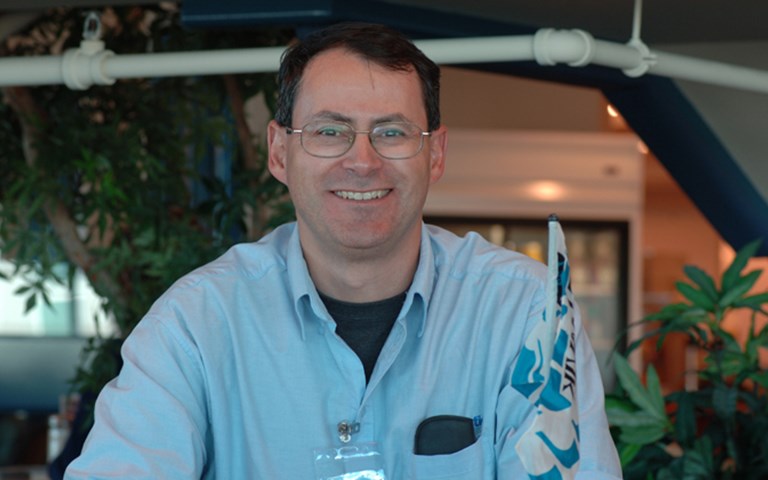Roy Slack. Courtesy of Cementation Canada
By the time he was approached by Kvaerner Cementation U.K. in 1998 to run a new North American arm, Roy Slack had more than 15 years of industry experience and some ideas of his own about how a mining contracting company ought to be run. At the newly christened Cementation Canada, he had an opportunity to create a company in that vision. First among his priorities was to eliminate workplace injuries. Since inception, the company has achieved zero lost-time injuries on many major projects, such as the Nickel Rim South mine twin shaft project for Xstrata and the Piccadilly project for PotashCorp. Along the way, Cementation Canada has also become recognized both within the mining industry and outside of it for its relentless focus on employee training.
Despite a full docket of work – 15 to 20 major projects at any given time, including marquee projects like the recent 6,943-foot-deep shaft at Resolution in Arizona and the upcoming Goderich Twin Shafts project in Ontario, plus engineering studies and smaller projects – Cementation makes sure that every one of its 1,100 Canadian and American employees gets formal training each year.
What has driven Cementation to be an industry leader in this area? And what lessons can other companies take from Slack’s vision as president of the company?
CIM: What is your personal motivation to build the company in this way, with this focus on safety and training, and what’s best for your employees?
Slack: When I started out in 1982, the second shaft project I went to was a deep timber shaft. There were four fatalities on that project. And, you know, I was new to the industry. In school, we didn’t talk much about safety, so it was a shock to me. And then you’d have some people saying, “Well, you know, it’s going to happen,” almost accepting that every project was going to have serious injuries. But I saw [those] things, and I was deeply impacted by them. The old-timers were accepting them, but the new people coming in were saying, “This isn’t right.”
You go through your career and there are different things that hit home. There are many years where you’re not in a position to change things, but once you are, once you get the chance, you say, “Let’s go for it. Let’s change some of these things.”
CIM: Cementation Canada has been named one of the Financial Post’s Ten Best Companies to Work For (2012), winner of Canadian Occupational Safety’s Canada’s Safest Employers Gold Award (2014), and one of Canada’s Top 100 Employers (2014, for the seventh time). How important is employee training to those results?
Slack: It’s absolutely critical. Part of our mission statement is to be not only the contractor of choice, but the employer of choice in our industry as well. It’s so important to the success of our projects to have not just the right people, but with the training they need to be successful.
I look at those processes [participating in “Ten Best”-type competitions] as a tool. It’s almost like an audit. It takes you through your systems and how you’re doing on them. It also introduces you to what other companies are doing, to give you good ideas on how to continually improve.
We have a really strong base in safety training – Workplace Safety North’s Common Core program and the Mining Industry Human Resources Council (MiHR) requirements – all those training elements you need for our industry. But we’ve also developed, over the last number of years, the soft-skill training and professional development that really adds depth and opportunity for our people. The soft skills are very important for safety as well as productivity.
CIM: At a time when many employers – particularly in the mining sector – find it difficult to justify spending on “extras” like employee training, how do you remain committed to that value?
Slack: If you’re committed to the value, then you’ll find ways to do it. When times are slow, we look at how we can conserve, how we can get the most for our dollar, but it doesn’t change our commitment to train and develop our people.
The vision, mission and values are my philosophy for the company. The basics of it are my own operating philosophy, but it’s certainly been fine-tuned by lots of people in the group.
CIM: How do you decide what training programs to undertake within the company?
Slack: There are two different processes. The first is on our projects. When we start a project, we have a training matrix that’s developed. [When you come onto a project], we evaluate what training you have now and what gaps you have in the training. Then we establish a program so that within so many months, you will have the modules completed and have the training done that you need to do the job we need you to do. So that’s a very structured process. It’s not a simple process, but it’s very easy to understand, and it’s all based on Common Core and MiHR records or the legislated requirements for whatever jurisdiction we work in.
The second part is for all staff. We do what we call a PAR (Professional Assessment Review). It establishes personal goals for the year, based on departmental goals. Departmental goals are set through a cascading process from corporate goals, so there is alignment between corporate, departmental and personal goals. Then we establish a personalized training program for the year, based on what you as an employee think you should be trained on, and based on what your supervisor thinks you should be trained on. It’s very much focused on professional development. So every employee has kind of a wish-list of training.
The other element [of staff training] is our leadership development program, which identifies a number of people in the company who we feel are in developing leadership roles. It’s a much more structured program. It’s supported by the Harvard ManageMentor system, which is an e-learning tool that has about 40 modules. We’ve developed a lot of it internally [too], and we can distribute it to a number of employees at a reasonable cost per employee. It’s an excellent program.
CIM: You’ve obviously decided that training is a worthwhile investment. Do you have any empirical data that would indicate the value of your investment in training and education?
Slack: [Laughs] No! That’s one of the things about training: there’s a little bit of faith involved. It’s very hard to put into numbers that return on investment. How do you put numbers on morale? How do you put numbers on retention? You don’t know how many people would leave if you didn’t do that training. It’s really difficult [to quantify]. You have to be committed to it for the right reasons.
We’re pretty diligent about what we spend on training, but there are other numbers that are much more important to me than what we spend. When it comes to training, what’s important to me is making sure that we’re implementing our plans. When we say “every employee will have a training program within the company,” we evaluate and see the amount of training each employee has done. And if we’re not meeting our goals, then that’s an issue. That’s a more important measure to me than what we spend.
CIM: Has the rigorous training resulted in any unexpected benefits?
Slack: The New Miner Training program, which we originally started in Sudbury to introduce non-mining people to the mining industry, has become a keystone of our partnership with the First Nations across Canada. It was never designed that way to start with. But training is key to any First Nations partnership. Our strong training programs have been very beneficial to our partners in introducing their people to the mining industry and getting them good jobs in the industry. And [it’s] not just for our company; once our work is done, they’re fully qualified to work for the owner’s team after we move out and hand the mine over to the owners. It’s been a real success story and very important for our group and for our partners.



